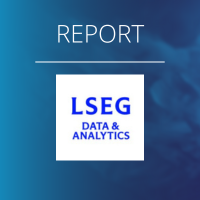Corporate Treasury Approaches to Managing Geopolitical Risk
By ComplexCountries
Geopolitical risk, or simply political risk, is a major challenge for treasurers.

We had all become used to viewing Iran, North Korea and Myanmar as off limits, and handling issues in Venezuela and Argentina. But the Russian invasion of Ukraine and escalating trade tensions between the US, the EU and China have made the world a more dangerous place.
This call was scheduled at the request of one member, who was looking for ways to measure political risk, or at least get external indicators they can use to convince management to tread carefully. More on that below. But we quickly moved to discussing what to do, once you have identified the risk. After all, if management wants to do business in a risky country, treasury has to make it happen.
Generally, peers participated in senior level discussions on strategy and objectives, but felt their main contribution was through managing the balance sheet:
- Cash repatriation: the main way treasurers can reduce immediate risk is by repatriating restricted and trapped cash. This often involves a cost: withholding tax in the case of dividends, or creating accounting losses on currency conversion. Tax departments and CFOs have to be persuaded this is the right thing to do. Several participants regularly circulate the amount of trapped cash by country to the business, and even the board of directors: this helps change attitudes.
- Change the business model: this is more difficult, but it can involve moving to invoicing in hard currency to reduce FX risk, or moving to selling through remarketers. One participant has moved from a single manufacturing location in China to multiple production sites in different regions. This was partly due to COVID disruptions and supply chain concerns, but it also addresses the potential exposure due to increasing tensions with China.
- Change the funding structure: in some markets, participants have moved from funding via intercompany loans from offshore locations to onshore external borrowing. This reduces the net exposure – provided the company is willing to walk away from the local debt in a crisis. In turn, that raises a series of issues – but at least, it gives more options. It is often more expensive.
- Manage the accounting exposure: some participants regularly replace cross border intercompany debt with equity. Often, this does not involve sending in fresh cash: it is possible to capitalise existing debt or outstanding invoices. As a result, any currency devaluation goes directly to ETA (the Equity Translation Adjustment) in US GAAP (CTA in IFRS), without going through the income statement. This avoids issues in the published numbers, but it does not change the economic reality. It can also create tax charges.
- Materiality: all participants agreed it is easier to address the problem when the amounts are low. One participant cited Russia, where the impact of writing off the business was not unduly significant: they had already successfully reduced the exposure before the invasion, as tension was building. No-one had an acceptable plan for closing their business in China, should the need arise.
- In the end, the business may decide to accept the risk – but treasury has still performed its role by making sure it is an informed decision.
Assessing the exposure: no single source of data met everyone’s requirements. Again, most participants found it was very helpful to share the restricted and trapped cash exposure with management, so all functions understand the problem. But participants do use, or are considering, the following:
- EIU (Economist Intelligence Unit): they publish a country risk score. One participant is considering subscribing, but is not sure. That participant tracks and publishes economic indicators, but would appreciate independent informed insight.
- One participant has a steering committee which meets monthly to consider all the metrics, and the potential need for action.
- Insurance companies and brokers: they usually have a department which tracks political risk, especially credit insurers, and will make this available to their clients. One participant uses Brown and Brown Insurance.
- One participant uses an indicator published by BNPParibas, which portrays risk levels using a traffic light system
- Bloomberg, CDS spreads, banks, trade balances, inflation levels, foreign currency reserve levels, news sources: participants gather data from various sources, sometimes in a formal report, to track stress indicators. These include data such as inflation rates, speed of currency depreciation, election schedules, to provide a comprehensive view of potential risk events.
- Supply chain financing: one participant uses supply chain financing, and includes political risk information provided by the banks as part of the input to the supply chain financing team
- Some participants provide essential commodities, such as healthcare products. Humanitarian considerations require them to continue selling, even in the most adverse circumstances.
Bottom line: the best way of managing political risk is to make sure all functions within the company are provided with ongoing external risk indicators, and understand what is at risk if things go wrong. This will help with the tough decisions, such as accepting tax costs or accounting losses when repatriating cash – or even restructuring supply chains to reduce the dependency on a single location. It is also important to look at the funding structure in exposed markets.
But, at the end of the day, it is not possible to do business in exposed countries while completely eliminating the risk. Usually (but not always!), the profit margins and return should compensate the company for the increased risk.
In the end, size matters: the solution to political risk is always reducing the exposure. We all have our fingers crossed, hoping this will not become necessary with China. And no situation or regime lasts forever – things will change one day!
This report was produced by Monie Lindsey based on a Treasury Peer Call chaired by Damian Glendinning.
To Access this Report:
Access to the full report is available to Premium Subscribers of ComplexCountries. Please log in on the website of ComplexCountries to access the download.
Please contact ComplexCountries to find out about their subscription packages.
Can’t get enough? Check out these latest items
 https://treasuryxl.com/wp-content/uploads/2023/03/Treasurer-Search-Logo.png
200
200
treasuryXL
https://treasuryxl.com/wp-content/uploads/2018/07/treasuryXL-logo-300x56.png
treasuryXL2025-12-30 09:19:492025-12-30 09:19:49Business Treasurer @Treasurer Search
https://treasuryxl.com/wp-content/uploads/2023/03/Treasurer-Search-Logo.png
200
200
treasuryXL
https://treasuryxl.com/wp-content/uploads/2018/07/treasuryXL-logo-300x56.png
treasuryXL2025-12-30 09:19:492025-12-30 09:19:49Business Treasurer @Treasurer Search https://treasuryxl.com/wp-content/uploads/2025/12/Copy-of-Live-Session-Nomentia-1.png
200
200
treasuryXL
https://treasuryxl.com/wp-content/uploads/2018/07/treasuryXL-logo-300x56.png
treasuryXL2025-12-19 08:49:372025-12-19 09:41:43Recap & Recording: Corporate Treasury in 2026 and beyond
https://treasuryxl.com/wp-content/uploads/2025/12/Copy-of-Live-Session-Nomentia-1.png
200
200
treasuryXL
https://treasuryxl.com/wp-content/uploads/2018/07/treasuryXL-logo-300x56.png
treasuryXL2025-12-19 08:49:372025-12-19 09:41:43Recap & Recording: Corporate Treasury in 2026 and beyond https://treasuryxl.com/wp-content/uploads/2024/01/Template_VACANCY-featured.png
200
200
treasuryXL
https://treasuryxl.com/wp-content/uploads/2018/07/treasuryXL-logo-300x56.png
treasuryXL2025-12-19 08:20:412025-12-19 08:20:41Vacancy Service Operations Manager (Treasury Tech) – Vienna
https://treasuryxl.com/wp-content/uploads/2024/01/Template_VACANCY-featured.png
200
200
treasuryXL
https://treasuryxl.com/wp-content/uploads/2018/07/treasuryXL-logo-300x56.png
treasuryXL2025-12-19 08:20:412025-12-19 08:20:41Vacancy Service Operations Manager (Treasury Tech) – Vienna https://treasuryxl.com/wp-content/uploads/2025/12/FinanceKey-Featured-1.png
200
200
treasuryXL
https://treasuryxl.com/wp-content/uploads/2018/07/treasuryXL-logo-300x56.png
treasuryXL2025-12-18 07:00:142025-12-18 18:17:55Pivoting in FinanceKey: turn raw data into instant insight
https://treasuryxl.com/wp-content/uploads/2025/12/FinanceKey-Featured-1.png
200
200
treasuryXL
https://treasuryxl.com/wp-content/uploads/2018/07/treasuryXL-logo-300x56.png
treasuryXL2025-12-18 07:00:142025-12-18 18:17:55Pivoting in FinanceKey: turn raw data into instant insight https://treasuryxl.com/wp-content/uploads/2025/08/LSEG-BLOGS-featured-10.png
200
200
treasuryXL
https://treasuryxl.com/wp-content/uploads/2018/07/treasuryXL-logo-300x56.png
treasuryXL2025-12-17 07:00:252025-12-16 08:55:07Test Data as a Service
https://treasuryxl.com/wp-content/uploads/2025/08/LSEG-BLOGS-featured-10.png
200
200
treasuryXL
https://treasuryxl.com/wp-content/uploads/2018/07/treasuryXL-logo-300x56.png
treasuryXL2025-12-17 07:00:252025-12-16 08:55:07Test Data as a Service https://treasuryxl.com/wp-content/uploads/2023/03/Treasurer-Search-Logo.png
200
200
treasuryXL
https://treasuryxl.com/wp-content/uploads/2018/07/treasuryXL-logo-300x56.png
treasuryXL2025-12-16 09:27:252025-12-16 09:27:25Interim Treasury Manager @ Treasurer Search
https://treasuryxl.com/wp-content/uploads/2023/03/Treasurer-Search-Logo.png
200
200
treasuryXL
https://treasuryxl.com/wp-content/uploads/2018/07/treasuryXL-logo-300x56.png
treasuryXL2025-12-16 09:27:252025-12-16 09:27:25Interim Treasury Manager @ Treasurer Search https://treasuryxl.com/wp-content/uploads/2025/06/Nirav-Interview-1.png
200
200
treasuryXL
https://treasuryxl.com/wp-content/uploads/2018/07/treasuryXL-logo-300x56.png
treasuryXL2025-12-16 07:00:212025-12-15 12:30:31Stablecoins: The Silent Revolution Is Already Here
https://treasuryxl.com/wp-content/uploads/2025/06/Nirav-Interview-1.png
200
200
treasuryXL
https://treasuryxl.com/wp-content/uploads/2018/07/treasuryXL-logo-300x56.png
treasuryXL2025-12-16 07:00:212025-12-15 12:30:31Stablecoins: The Silent Revolution Is Already Here https://treasuryxl.com/wp-content/uploads/2024/02/Featured_Treasurer-Search.png
200
200
treasuryXL
https://treasuryxl.com/wp-content/uploads/2018/07/treasuryXL-logo-300x56.png
treasuryXL2025-12-15 07:00:062025-12-19 08:28:55The Future of Financial Messaging: Migrating from MT940 to ISO 20022
https://treasuryxl.com/wp-content/uploads/2024/02/Featured_Treasurer-Search.png
200
200
treasuryXL
https://treasuryxl.com/wp-content/uploads/2018/07/treasuryXL-logo-300x56.png
treasuryXL2025-12-15 07:00:062025-12-19 08:28:55The Future of Financial Messaging: Migrating from MT940 to ISO 20022 https://treasuryxl.com/wp-content/uploads/2025/09/Nomentia-BLOGS-featured-5.png
200
200
treasuryXL
https://treasuryxl.com/wp-content/uploads/2018/07/treasuryXL-logo-300x56.png
treasuryXL2025-12-12 12:54:092025-12-12 13:07:57Nomentia Announces Leadership Transition to Drive Next Phase of Growth
https://treasuryxl.com/wp-content/uploads/2025/09/Nomentia-BLOGS-featured-5.png
200
200
treasuryXL
https://treasuryxl.com/wp-content/uploads/2018/07/treasuryXL-logo-300x56.png
treasuryXL2025-12-12 12:54:092025-12-12 13:07:57Nomentia Announces Leadership Transition to Drive Next Phase of Growth


